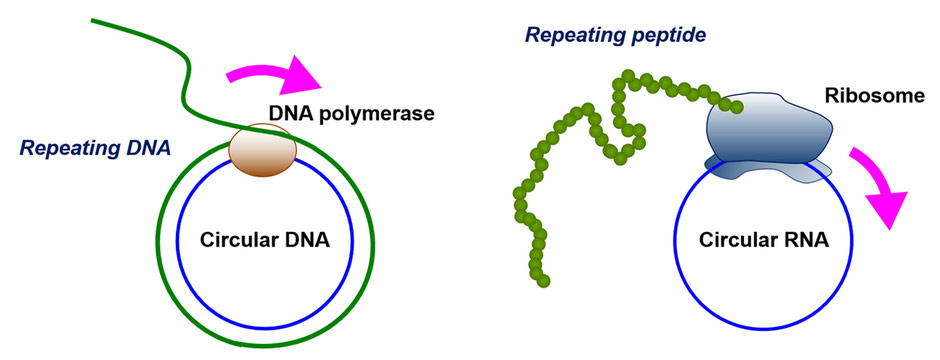ヒト生細胞における環状RNAのローリングサークル翻訳
Rolling Circle Translation of Circular RNA in Living Human Cells
2015年11月10日 Scientific Reports 5 : 16435 doi: 10.1038/srep16435

最近、我々は、大腸菌(Escherichia coli)の無細胞翻訳系でローリングサークル増幅(RCA)機構により環状RNAから効率的にタンパク質合成反応がおこることを報告した。最近の研究から、ヒト細胞にはエキソン配列からなる環状RNAが豊富に存在することが示されている。しかし、このような環状RNAが細胞内でタンパク質に翻訳されるかどうかは明らかになっていない。本研究では、終止コドンのないオープンリーディングフレームを持つ環状RNAを準備し、その翻訳反応について真核細胞系で検討した。環状RNAは、IRES(internal ribosome entry site:配列内リボソーム進入部位)、ポリAテール、キャップ構造などの特別な配列がなくても、ウサギ網状赤血球溶解物中で翻訳され長鎖タンパク質を生じた。真核生物の翻訳系は、RNAを環状化することで、より単純なRNAでもタンパク質合成の鋳型にすることができる。今回我々は、環状RNAがヒト生細胞においてRCA機構により効率的に翻訳され、豊富にタンパク質産物を作り出すことを実証した。これらの知見は、ヒト細胞に存在するエキソン由来の環状RNAがこれまで考えられていたよりも翻訳されている可能性が高いことを示唆するものである。
Naoko Abe, Ken Matsumoto, Mizuki Nishihara, Yukiko Nakano, Aya Shibata, Hideto Maruyama, Satoshi Shuto, Akira Matsuda, Minoru Yoshida, Yoshihiro Ito & Hiroshi Abe

